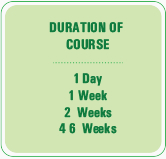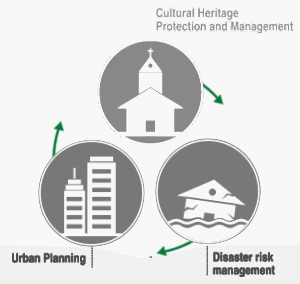

 |
 |
 |
|||||||||||||||
 |
 |
 |
|||||||||||||||
 |
|||||||||||||||||
 |
 |
 |
|||||||||||||||
The content of this type of course is broadly divided into core content and thematic content. The core content comprises of the basic principles and approaches of disaster risk management and cultural heritage management and would remain the same regardless of geographical and administrative context.
On the other hand, the thematic content that focuses more on variables such as the nature of cultural heritage and the type of hazards can vary widely. The length of the course and the people organising it are largely dependent on the administrative and institutional set up in the area as well as the availability of resources. The core content of the course needs to be prepared and disseminated by senior experts in the field. For the thematic content, it is possible for the resource person to be a working expert or professional who has extensive practical experience in either field.
Some potential organisers with the necessary resources for such a course could be:

The experiences of the International Training Courses organised by R-DMUCH indicate that courses which focused on a single theme had a greater impact on participants. A thematic focus allows the organisers to limit the scope of training and is more effective in addressing specific concerns along with teaching the broad principles of disaster risk management. The thematic focus of the course is dependent on the nature of cultural heritage, the kinds of disaster risks being addressed and could also respond to geo‐political contexts.